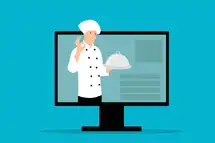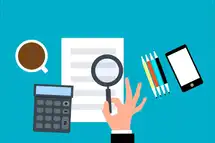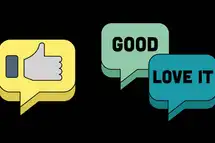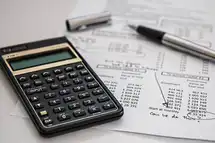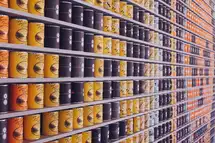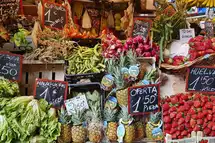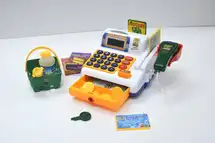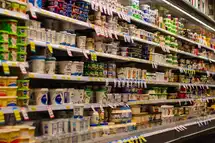What is a sales forecast example?
A sales forecast example is a projection of future sales, typically based on past sales performance and current market trends.
How to Make Accurate Sales Projections With a Sales Forecast Example
What is a Sales Forecast?
Sales forecasting is used by businesses to estimate and predict the sales revenue that can be achieved over a specific period. This period can be anything -- weekly, monthly, quarterly, biannual, or annual. Businesses use historical sales data from various sources to make these projections, such as the revenue funnel, point of sale (POS) systems, sales pipeline, or customer relationship management software (CRM software). In addition to this data, estimates made by the sales team, user surveys, and expert analyses can also predict future revenue.
Sales forecasting is a key way for companies to plan for the future. By looking at past sales data, comparing it to industry trends, and considering economic factors, businesses can get a good sense of what to expect in the coming months or years. This information can then be used to make informed decisions about staffing, cash flow, and resource allocation. Sales forecasting is relatively straightforward for big, established companies, as they have years of historical data to work with. It can be more challenging for new or small businesses, as they have to rely on market research and competitive intelligence rather than hard numbers. However, even in these cases, sales forecasts can give valuable insights into how a company should operate taking daily sales, weekly sales, or monthly sales into account.
Sales forecasts can help your company achieve its business goals. By predicting the total revenue each sales rep, team, or division expects to bring in, you can better prioritize which deals in your sales pipeline are most likely to close and for how much. You can better allocate your resources to areas that will have the biggest impact on your bottomline.
Why is a Sales Forecast Important to a Business?
Sales forecasting allows companies to-
- Predict future business performance- Companies use sales forecasting to help them plan for future growth and manage their workforces better. Forecasting can also help companies budget for lean times when they may be ill-equipped to address unforeseen expenses.
- Efficiently allocate resources- Knowing your future sales performance allows you to be better prepared for peaks and lulls in the business. For example, Saturdays are usually busier in the restaurant industry than other days. With this in mind, you can use your sales forecast to plan for extra staff and supplies on those days.
- Plan for future growth- On days when you expect a lower footfall and business to be relatively slow, you can use sales forecasts to reduce the inventory stock for that day and the number of servers you have working. To attract more customers on these slower days, your marketing team can run sales promotions, like a buy-one-get-one offer on popular menu items or drinks.
Sales forecasting is central to every good business plan.
You want to create an accurate sales forecast, but you don’t know how.
Factors That Impact a Sales Forecast
The ability to forecast sales accurately is something every business should have. After all, if a company can't produce and sell the required quantity of goods at the right time, it will quickly fall behind its competitors. But several factors -- internal and external -- can affect a sales cycle. Businesses can stay one step ahead of the competition by keeping an eye on these potential threats and demand fluctuations. Here are some causal factors-
Internal factors-
Sales teams are complex machines that are constantly changing and evolving. Even the smallest change, like altering a sales territory, can affect the sales forecast. For instance, if there are changes in territories or boundaries, or a new management plan is introduced, sales may dip. However, once the sales representatives adjust to their new territories, sales will be back to normal and maybe even higher than before.
Similarly, changes in a business's commission structure or compensation for sales executives can impact the sales forecast. For example, if a company switches to a structure that rewards sales representatives for increasing revenue rather than closing more deals, their forecast should anticipate fewer new accounts with higher-value customers.
Changes to products or services can have a big impact on sales forecasting too. If, for example, a new offering is easier for sales reps to sell, the sales forecasting method need to consider this.
External factors-
The ever-changing market landscape can have a big effect on sales forecasts. If businesses don't keep an eye on trends, the sales forecasting methods used can become redundant. On the other hand, growing demand for a particular company's product or service is a good sign. As a result, the business can be bullish about its sales forecast and projected growth.
Seasonality and inflation are the two most common factors that can affect sales forecasts. An example of seasonality is how a company's sales may go up during Christmas because people buy gifts, cakes, and chocolates. For restaurants, the holiday season means more home deliveries. This differs from market changes, which are not cyclical like seasonal highs and lows. Seasonality is something that can be predicted reasonably well, so it should be taken into account when sales forecasts are being created. Another factor to consider for long-term forecasting is how inflation might affect the costs of things and pricing strategies.
Besides these, several factors can affect forecasting accuracy, including consumer satisfaction, marketing expenditure, budget allocation, the political climate, and even weather patterns. Additionally, regulatory changes or new competitors entering or exiting the market can impact too. An example of this is the recent Covid-19 pandemic that completely disrupted almost every business plan, forecast and sales management method.
How to Make a Sales Forecast

There's no single way of forecasting sales; every business needs its own methods. But this guide will take you through the general process of creating a sales forecast for a restaurant business, step by step.
1. Set your sales forecasting goals- Before you begin forecasting sales for your company, you first need to establish some goals. This can include, but is not limited to, factors such as your annual recurring revenue (ARR), the number of new products you launch, and the number of renewals for older products. The goals you set for your sales forecast will generally depend on where your business is in its development. For example, suppose you're still in the early stages, you may focus on establishing new products to grow your customer base and receive market validation, even if it doesn't immediately impact your ARR. On the other hand, a more mature company with multiple product lines might instead focus on the number of products sold within each line.
2. Look at your past data- If you're forecasting sales for an already established restaurant, you can use historical data to help you plan your forecast. Look at the sales process and sales data from the same time in the past few years. This could be for particular dayparts or shifts, a specific day in the week, the entire week, month, or even season. When forecasting sales for a new restaurant, you will have to take into account many factors. The number of tables, the days and hours of operation, the type of customers, and their expected spending habits -- these are all important details to consider. It can be difficult to predict your new restaurant's success in the initial stages. However, you will get better at it as you go along.
Applying a simple formula can simplify matters-
Restaurant sales forecast = Number of days/shifts operational X average number of guests X average spend per person
3. Keep an eye on external factors and new trends- Make sure to factor in any circumstances that could impact your sales numbers, such as holidays, events, weather, or market changes. Also, be aware of any new trends that could affect your forecasts, such as changes in demand or supply.
4. Get into the details- If you want to be successful with your sales forecast, you need to get granular. Look at historical forecasting data to determine which menu items will be the most popular, and then plan your inventory and staffing around it. This will prevent you from being caught off-guard by a sudden rush or lull in business, and it will help you schedule your employees efficiently.
Popular Sales Forecasting Methods
Sales teams use three primary methods to predict future trends- trend analysis, regression analysis, and time-series analysis.
- Trend analysis involves studying past data points or historical forecasting data to discern whether the data is moving upward, downward, or is static.
- Regression analysis employs mathematical formulas to figure out relationships between variables like price and quantity.
- Time-series analysis breaks down data into manageable chunks -- like days, weeks, or months -- to spot recurring patterns over time.
Making sales projections can be complicated.
With our sales forecast example, you'll see how easy it is to anticipate demand accurately.
Example of a Sales Forecast
Let's understand the sales forecasting for a day when your restaurant is at its busiest. You have ten tables with a seating capacity of four people each. If you decide to serve one round during lunch and two sets of customers during dinner in full capacity, the total number of customers you will serve = 40 (lunch) + 80 (dinner).
This means that the kitchen will be preparing and presenting 120 main courses to customers in two shifts.
To make sure that everything runs smoothly, it's a good idea to plan how many courses each table will be served. That way, you can avoid any surprises and optimize your resources.
The calculation will be- two-dayparts -- lunch with one round of serving, and dinner with two services -- would attract 120 patrons, and the POS data reveals that the per-person ticket size is approximately $25.
Sales Forecast/Total Revenue Generated = Table count X table turn X number of guests per table X average ticket size.
For the above scenario, it would be-
Sales Forecast = Table count (10) X table turn (3) X number of guests per table (4) X average ticket size (25)
Sales forecast = $3000
So, for a busy day with full capacity and three rounds of serving, the sales forecast for your restaurant would be $3000. But, of course, you would need to also predict the number of takeout and deliveries for a more accurate figure.
Top 3 Sales Forecasting Tools

- Zip Forecast- Zip Forecast is a cloud-based sales forecasting and demand planning solution from Hubworks. This solution makes it easier than ever to generate accurate sales projections by allowing users to create sales forecast templates and analyze and comprehend data in real-time, using any device from any location. Plus, with the ability to monitor and analyze data daily and estimate sales in intervals of 15, 30, and 60 minutes, users can choose a timeframe that meets their needs. Zip Forecast can be seamlessly integrated with a Pos System like Plum POS, another Hubworks software solution.
- Zoho CRM- This software application helps sales teams manage the customer relationship lifecycle. With an easy-to-use interface, users can create forecast templates. It has features for sales forecasting, contact management, pipeline management, marketing and inventory management, business reporting and analytics, automation of workflow, and task management. It also has an AI assistant that helps users navigate the app easily.
- SlickPie- This is an innovative cloud-based accounting solution for small businesses. It helps users record, track, and reconcile income and expenses through an online dashboard quickly and easily. SlickPie also integrates sales forecasting with conventional accounting systems to create an optimized software platform. It provides users with valuable data-driven insights that are easy to understand. Additionally, SlickPie allows users to begin invoicing customers immediately upon signing up for the software. While invoice templates are available, users can customize the look and feel of the invoice document to better fit their brand.
Accurate sales projections are essential for businesses, but they can be difficult to create.
This post will walk you through a sales forecast example and show you how to anticipate demand accurately with a few simple steps.








